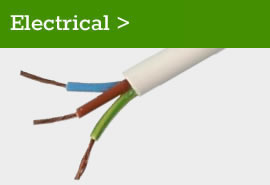Once your installation is complete and has been registered with the Micro generation certification scheme by Spectrum Renewable Technologies you will receive a certificate. You will then need to contact your energy suppliers Feed in tariff team who will guide you through the registration process.
Do I need to inform Building Control?Spectrum Renewable Technologies will register the addition to your electrical installation with building control for you and issue part P certification for domestic customers
Do the panels need cleaning?The panels are fitted with self cleaning glass and usually dust and dirt washes off when it rains if the panels are installed at an angle of at least 15 degrees.
Does the system need batteries?If we feel your system will generate export electricity we will advise you and provide information and options for battery storedge systems.
Can I buy a system and install it my self?Solar PV systems are only available from specialist distributors, electrical wholesalers and renewables merchants, these systems must be installed by an MCS accredited installer. If the system is not installed by an MCS accredited it will not be covered by the manufacturers warranty and you will not be eligible for the Feed-In Tariff.
How much roof space will I need?Spectrum Renewable Technologies will carry out a site survey and advise you of the best possible solution to suit your requirements.
Will my roof be strong enough?Most roofs are strong enough to support a PV installation without any reinforcement. Spectrum Renewable Technologies will perform a site survey and make an assessment prior to installation.
What happens at night?PV panels do not produce energy in the dark and so electricity is drawn from the grid in the normal way. If you have battery storage as pert of your system your home will use the electricity from the battery first.
What happens if there is a power cut? Our PV systems are entirely connected. If there is a power cut the system is automatically switched off as a safety measure to ensure power does not leak onto the grid in order to protect personnel working to restore the power supply. There will be no power to the building during the power cut.
What are the effects of shade?With our Solaredge system we can reduce the impact of shade on the generation of your system dramatically. We can model your system in 3D to demonstrate any effects of shadin.
Do PV Panels need direct sunlight to work?Solar PV works from daylight and not direct sunlight, but more power is produced on a sunny day as opposed to an overcast or cloudy one.
How does a solar PV system work ?Solar panels generate electricity using energy from the sun. Because the panels produce energy from daylight and not solar radiation they still produce electricity on cloudy days. The direct current produced by the panels is converted by the inverter to alternating current for use in the building. The electricity produced is either consumed directly by appliances in the building, or if more power than required is generated it is used to charge battery storage, heat hot water or exported to the grid. At night or when the system is not producing enough energy power is supplied by Battery storage or the grid in the normal way.
What are the optimal conditions for PV?PV panels work best when installed at an angle of 30 to 40 degrees on a south facing roof. Panels can be installed on East and West facing roofs and can still generate up to 85% of the equivalent production of a south facing roof.
Do I need to inform my electricity supplier?For systems less than 4KW peak power Spectrum Renewable Technologies will inform them once them once the installation is complete.
Do I need planning permission?For larger systems permission will need to be gained in advance from the network operator.We will liase with the network operator on the the customers behalf.
PV roof systems fall under permitted development rights and so do not require planning permission in most cases. The permitted development rights have now been revised to include commercial buildings and ground mount systems
How long will installation take?However if your building is listed or in an area of outstanding natural beauty, please consult your local council planning department for advice before proceeding with the installation.
For a system of 4KW peak or below, installation will normally take between 2 to 3 days.





